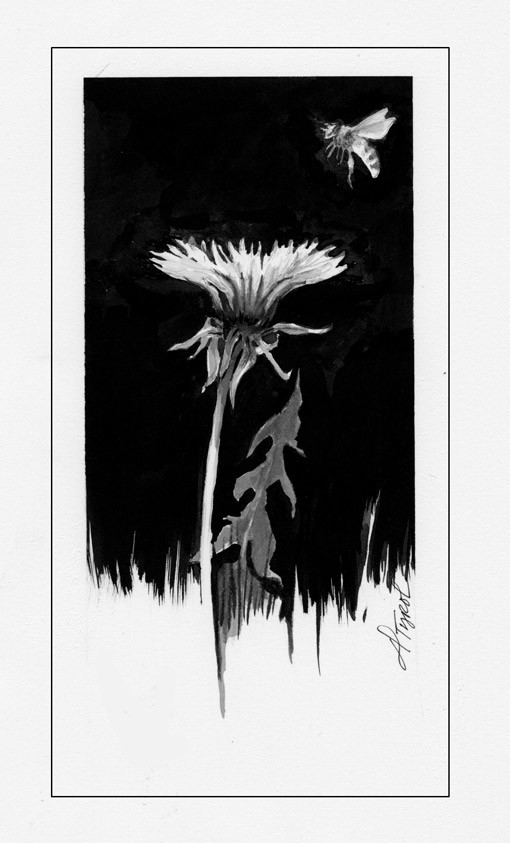
Four years ago, researchers found a statistical link between Israeli Acute Paralysis Virus and Colony Collapse Disorder in honeybees.
Three years ago, researchers at Penn State University found “unprecedented levels” of pesticides in the wax of honeybee combs. Constant exposure to these pesticides could be a factor in Colony Collapse Disorder, the researchers said.
Two years ago, University of Indiana researchers found that varroa mites, which have been plaguing honeybees in this country for years, carry a family of viruses that are linked to Colony Collapse Disorder. High levels of varroa mites had been pegged to Colony Collapse Disorder early on.
A year ago, researchers from the U.S. Department of Agriculture announced that the combination of the nosema fungus and a family of viruses might be working together to cause Colony Collapse Disorder.
Judging from the press releases and news stories, it seems that Colony Collapse Disorder (CCD), the name given to the sudden death of an entire hive or colony of honeybees, and first recognized in 2006, is a mystery that has been solved many times over. But that’s not true, say our local honeybee experts. CCD continues to be a puzzle and will remain so in the near future, no matter how many news stories declare the mystery solved.
“Different groups of scientists keep finding some pattern that correlates with CCD, and the media keeps announcing that they have found the cure. But there won’t be a single cure, because CCD isn’t a single disease. It’s a disorder; it’s what happens to a super-organism that gets too sick. There are multiple causes that can trigger CCD-like symptoms,” says Rowan Jacobsen, a Calais, Vermont-based writer and the author of the book “Fruitless Fall,” an in-depth look at CCD and our complex relationship with honeybees.
The lack of a clear explanation for CCD has not paralyzed local beekeepers, however.
“Because they haven’t identified the cause,” says Chris Rallis, of the New Hampshire Department of Agriculture, the state’s go-to person for CCD, “we are focusing on controlling the pests and diseases, and making sure the bees have good nutrition.”
“It’s the same good, basic advice that we’ve been giving for 20 years,” says Steve Parise, who was once Vermont’s official state apiculturist and who still helps the state’s beekeepers in his job with the Vermont Agency of Agriculture, Food & Markets.
While the advice is the same in both states, the CCD situation isn’t. Vermont has never had a case of CCD, Parise says. “I’m fairly confident that we don’t have it here.” New Hampshire has had a few cases of their more seasoned beekeepers experiencing unexplained colony losses that they suspected to be CCD.
For beekeepers, fighting off CCD means keeping hives healthy by keeping the levels of mites and other parasites down, keeping the bees away from pesticides, and making sure they have lots of food.
“We don’t have the problem here as some states do with protein and nectar sources,” says Parise. Vermont’s patchwork of farms, fields, and forests means there’s usually something in bloom throughout the warm-weather months. Finding food sources can be more challenging in some parts of New Hampshire.
For beekeepers, assuring good nutrition might mean adding a pollen patty at the top of the hive for the over-wintering cluster to find when they make their way there in the spring, Rallis says. For the rest of us, he says, making sure we maintain a wide range of flowering plants in the landscape can help honeybees in their plight.
In fact, providing honeybees with an important food source doesn’t require any effort at all, Rallis and Parise both say: just don’t mow down your dandelions.
As a non-native plant, dandelions are a weed by almost every definition, but honeybees are not native to this continent, either. Dandelions bloom early in the spring, when there are few other flowers. They are a vital source of both nectar and pollen at that time of year, when the bees’ food stores are at their lowest.
The peak dandelion bloom is notable to beekeepers, Rallis says. “Beekeepers time some of their hive maintenance around that dandelion flow.” For example, some people reverse their hive chambers then. Others believe that when you see dandelions, then it’s time to add “supers” or extensions to the hive, so the bee colony can grow on the bounty of dandelions.
Will we ever get to the bottom of CCD? “I don’t thing its ever going to come down to a few things,” says Parise. “We are looking at 10 different factors interacting with each other.”
“About all they have in common is that humans are a factor,” says Jacobsen.
The only cure, for now, is a healthier environment for bees, and for this important and welcome non-native species, that includes plenty of dandelions.


Discussion *